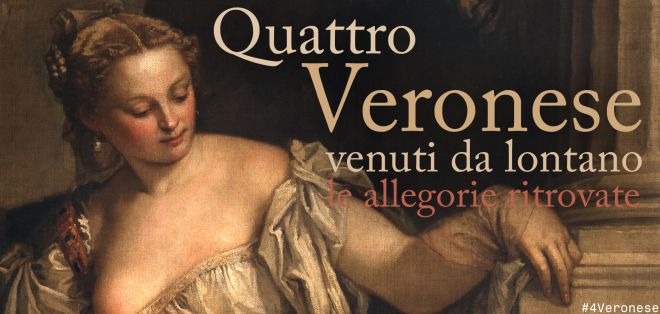Quattro Veronese venuti da lontanoLe Allegorie ritrovate5 July - 5 October 2014


Although twenty years Palladio's junior, Paolo Veronese was already a well-established artist when the architect was just beginning to enjoy his first major successes. Palladio himself used the words a “most excellent painter” to describe the artist who decorated the rooms in his Palazzo Porto, constructed in Vicenza in the early 1550s. From that moment on, they had a relationship of close creative collaboration that was to reach a climax in the “painted architecture” of the Villa Barbaro at Maser.
Three of the four Veroneses in the exhibition include ancient architectural elements, but this is not the only reason why they have been reunited from collections 10,000 kilometres apart. For some time now, it has been suggested that the two Allegories by Veronese in the Los Angeles County Museum of Art were part of a series of four. But only recently were the other two rediscovered in Italy.










Two large allegorical figures attracted the attention of Cristina Moro, a final-year student at the University of Milan, while she was researching the art collection in the Villa San Remigio at Verbania Pallanza. The two works were then firmly attributed to Veronese by Vittoria Romani, a lecturer at the University of Padua, who in the exhibition catalogue explores the meaning of the new attribution in the context of the artist’s early production.
So for the first time – in Vicenza – the two “new” Allegories, which a very recent restoration has returned to their original chromatic splendour, have been set side by side with their Los Angeles “twins”. The four paintings clearly formed a cycle for a still unknown location. On show together with the paintings, some splendid examples of Renaissance instruments for measuring and the first editions of books from the mid-sixteenth century help to interpret the paintings in the cultural context of the age.
Opposite the four masterpieces by Veronese, in a temporal short-circuit, there are two Landscapes by Umberto Boccioni, painted from the terrace of Villa San Remigio in 1916. Some early twentieth-century photographs provide fascinating images of the villa, the owners and their collection of ancient and modern art.
We will share info, contents, stories on this exhibition also on Facebook and Twitter: PalladioMuseum, #4Veronese
Curated by the CISA Palladio, with the Consorzio La Venaria Reale and the University of Padua, the exhibition is part of a project involving various exhibitions on Paolo Veronese to be staged throughout the year (Verona, Padua, Castelfranco Veneto and Bassano del Grappa).